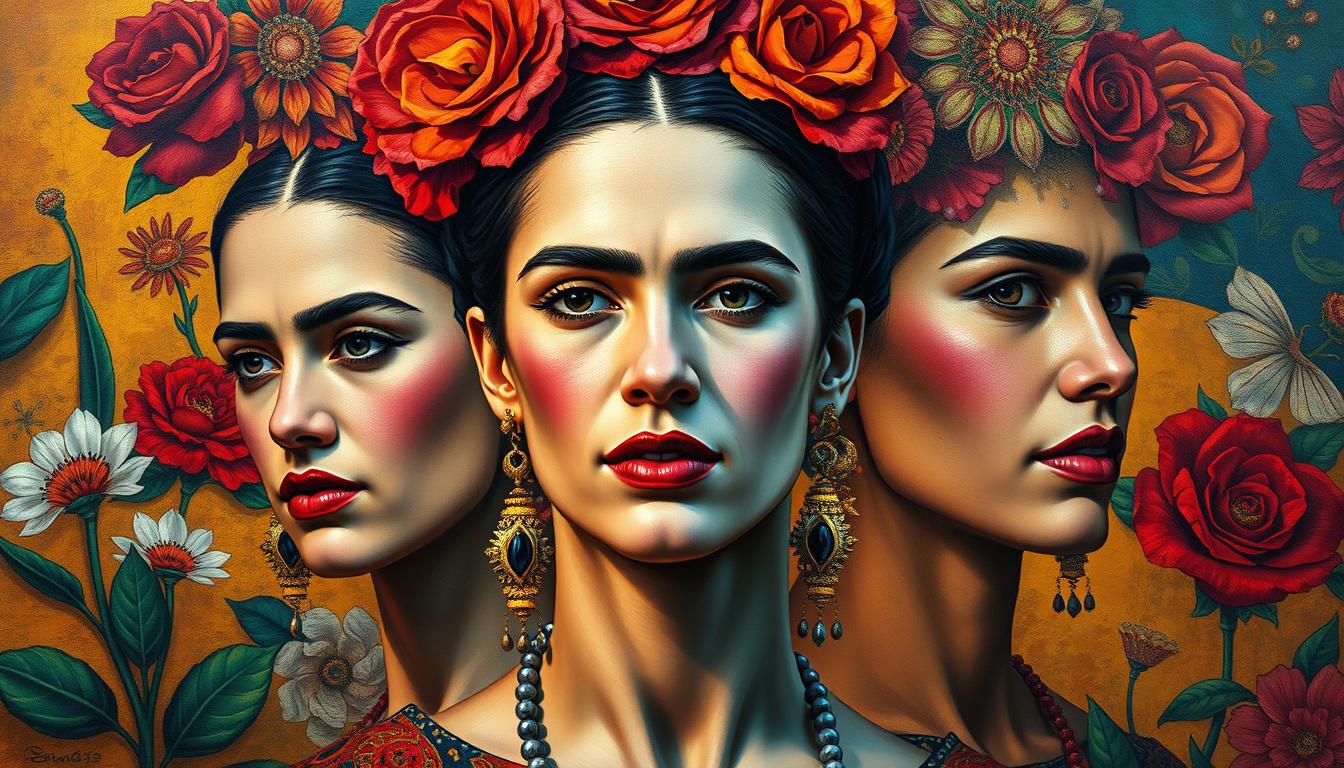Physical Address
304 North Cardinal St.
Dorchester Center, MA 02124
Physical Address
304 North Cardinal St.
Dorchester Center, MA 02124

Frida Kahlo’s “The Wounded Deer” is a moving self-portrait. It shows her skill in mixing human and animal features. Painted in 1946, it’s a standout piece, symbolizing her pain through a deer.
In “The Wounded Deer,” Frida Kahlo combines human and animal traits. The deer has Frida’s face and is hurt, mirroring her pain. This blend highlights her emotional and physical struggles.
“The Wounded Deer” is tied to Frida Kahlo’s failed surgery. It shows her vulnerability and the emotional weight of her health issues. By being a wounded deer, Frida shares her deep pain and bond with nature.
| Symbolism | Representation in “The Wounded Deer” |
|---|---|
| Deer | Vulnerability and innocence |
| Wounds | Physical and emotional pain |
| Frida’s Face | Personal identity and suffering |
“The Wounded Deer” offers a peek into Frida Kahlo’s art and her view of life. It’s a powerful example of her ability to express complex feelings through her work.
Exploring Frida Kahlo’s paintings reveals her personal struggles and political views. Her art mirrors her life, including her physical and emotional pain. It also shows her political beliefs and cultural roots.
Frida Kahlo’s work often touches on feminism, questioning societal norms. Her painting “The Two Fridas” shows dual identities and the quest for self-definition. Her art symbolizes the female experience, showing themes like identity, suffering, and resilience.
Frida Kahlo was very proud of her Mexican heritage, which shines through in her art. She mixed Mexican folk art and culture into her paintings. This celebrates Mexico’s rich history and traditions.
Some key aspects of Mexican cultural pride in her art include: